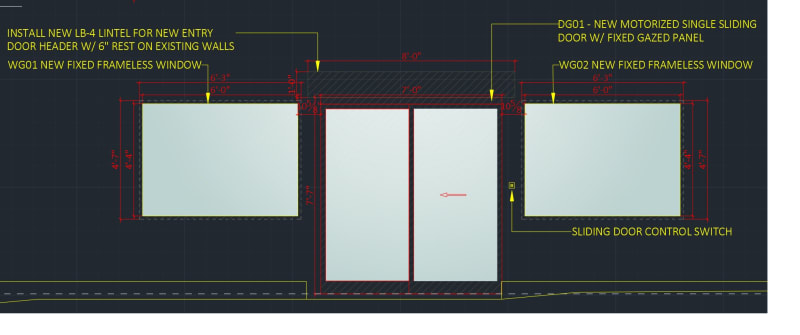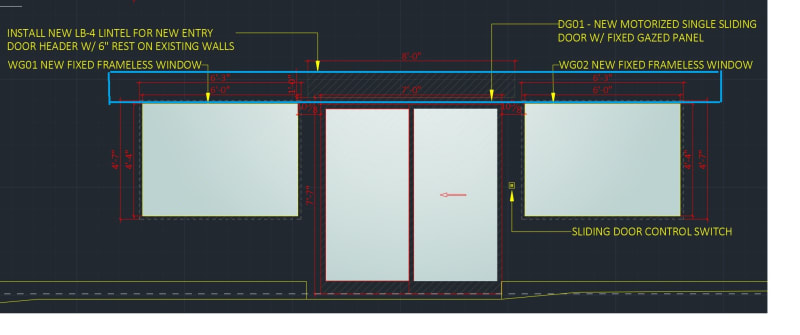Redacted
Structural
- Mar 12, 2016
- 160
Hi there,
I am working on a project, where the architect would like to create a new door opening for a restaurant between two existing windows, see below :

The existing building is built from CMU; it is two stories.
The door is quite wide and the cut out would only leave ~10" of masonry standing between the new door and the existing window. I am assuming the existing window lintels have a bearing seat of 4" to 6". My question is, can I design a lintel for the door alone, assuming the existing 10" nib would be a suitable bearing support? Is there guidance on what the minimum thickness for an unreinforced CMU bearing support should be? Or alternatively, should I demolish the existing window lintels and design a large beam spanning ~20', which would bear on the thicker sound wall further away (the beam would act as the lintel for both windows and the door and not be reliant on the 10" masonry nibs see below).

I guess there is also the potential to add in a column but there is a basement level and the column would most likely need to extend all the way down, so not sure if that's feasible.
I am working on a project, where the architect would like to create a new door opening for a restaurant between two existing windows, see below :

The existing building is built from CMU; it is two stories.
The door is quite wide and the cut out would only leave ~10" of masonry standing between the new door and the existing window. I am assuming the existing window lintels have a bearing seat of 4" to 6". My question is, can I design a lintel for the door alone, assuming the existing 10" nib would be a suitable bearing support? Is there guidance on what the minimum thickness for an unreinforced CMU bearing support should be? Or alternatively, should I demolish the existing window lintels and design a large beam spanning ~20', which would bear on the thicker sound wall further away (the beam would act as the lintel for both windows and the door and not be reliant on the 10" masonry nibs see below).

I guess there is also the potential to add in a column but there is a basement level and the column would most likely need to extend all the way down, so not sure if that's feasible.
